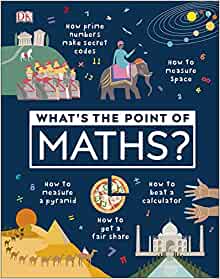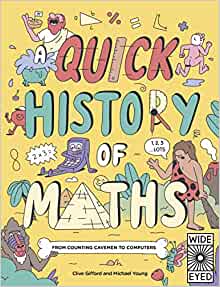What We’re Using in 2021: Maths
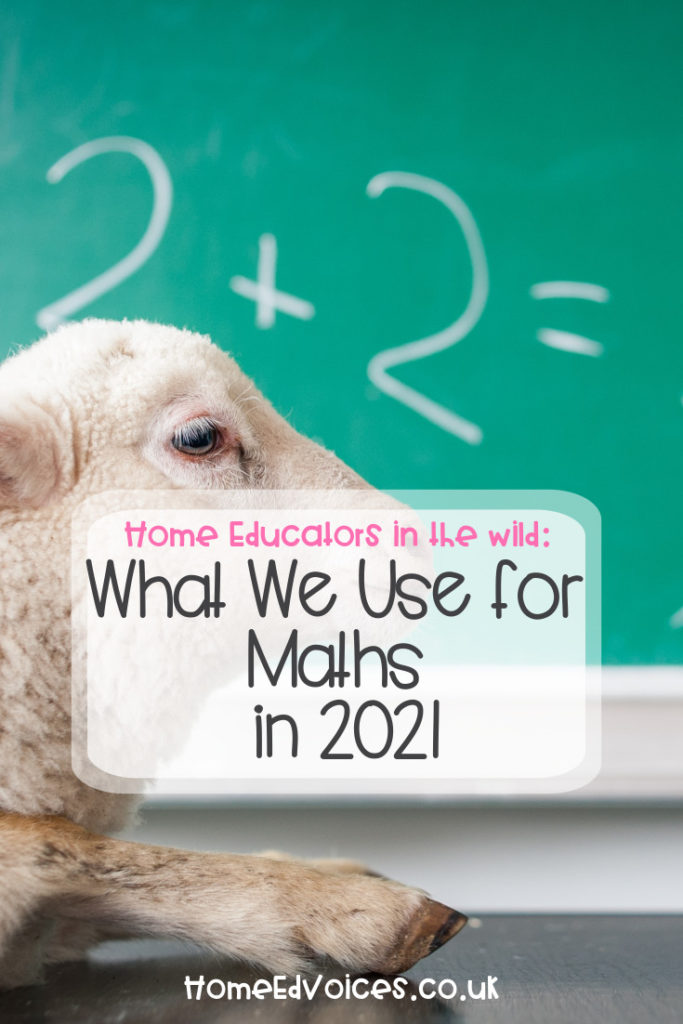
This is the start of a new series where we (and guests) share what resources we’re using for particular subjects. This week… Maths.
Katie’s maths Resources
KS2 maths for my 8 year old and 10 year old
We are still using Maths No Problem, which is a Singapore style maths curriculum, and it’s still really working for us. I wrote a review of it last year which you can read here.
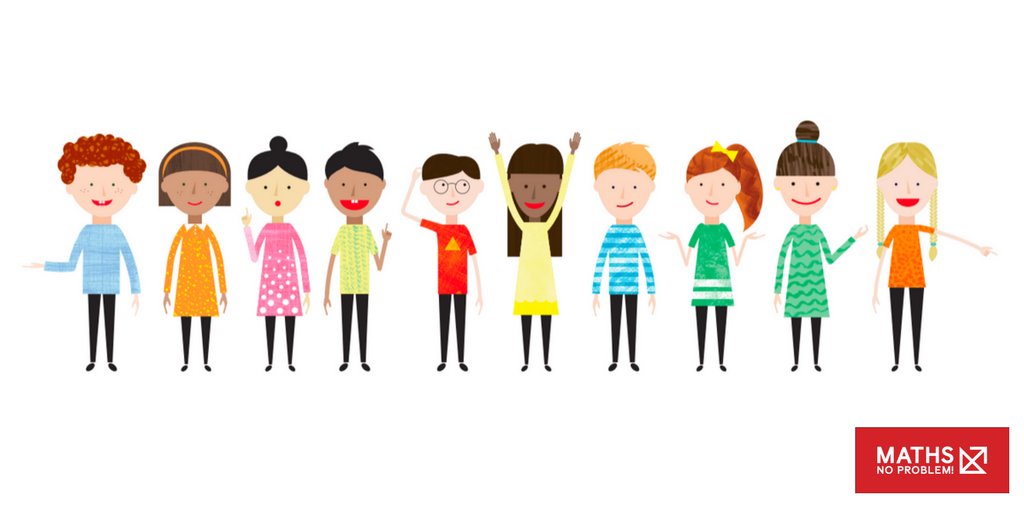
(I also just made a wonky video on my phone to answer some questions about the curriculum which I put on youtube. If you want to see inside the year 3 and 4 curriculums and get a quick comparison of the two years, then you can find it here.)
I try to do maths every week day because these lessons are short and very do-able.
Apart from that there is cooking, saving and spending pocket money , boardgames and D&D and a bit of an origami craze going on in our house, which has needed some maths occuring in the wild.
KS3 maths with my 12 year old
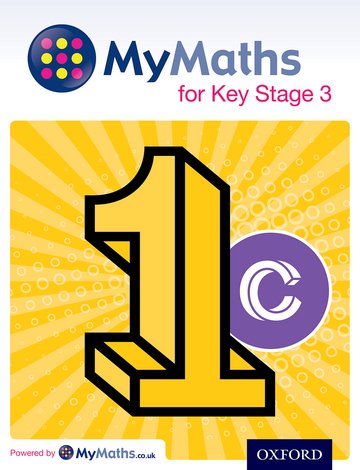
Last summer my eldest completed Maths No Problem! and moved on to My Maths, which is Oxford University Press’ key stage 3 maths curriculum. We are currently about half way through 1c.
I bought the textbook and the teachers companion, and so far I think it is working pretty well for us.
I agree with my eldest that there are often too many problems to work through in each lesson, and it’s definitely a step up in maturity from the KS2 work – far fewer cute illustrations, and far more numbers. But I don’t make him work through every problem just because it’s there on the page. If he has grasped the concept and is getting them right we can move on to the next bit.
I like that the second half of the lesson are work problems that use that maths being taught. I’m guessing these are often set as homework but we blast through them during our lesson. Again, sometimes there is a lot of busy work, but we’ve learned to spot that, work through some of it and – again if he’s understood – move on.
Kate’s Maths Resources
I will be reviewing materials I’ve been using since September, but also mentioning some new materials I have thrown into the mix just this week. For us, a school year runs from the last week in February until the first week of December. We’ve started a week early this year (even though it’s the week of Miss Newly Eight’s birthday!) because Miss Newly Eight was so tired of lockdown life she actually asked for an early start.
KS2 maths with Miss Newly Eight
What we’ve used:
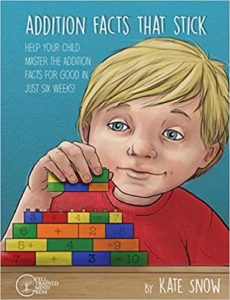
Kate Snow’s Math Facts That Stick
We have been using the addition and subtraction facts books for two years now. I own the multiplication and division books and have loaned them out to friends while we wait to use them ourselves. That may sound like the books aren’t working, but to be fair to Kate Snow, I don’t use them as intended. We play the games daily, but we almost never use the daily worksheets. In November I used the worksheets like end-of-year quizzes and it confirmed for me what I already knew, that my children think as slowly as I do and test situations are not accurate reflections of our knowledge. They are excellent reflections of how spectacularly we tank under pressure and repetition did not seem to desensitise my children at all.
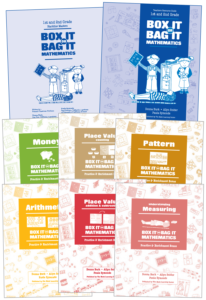
Bag It or Box It
This is a free maths resource for K-2 (American). It’s called Bag It or Box It because each unit requires a collection of manipulatives that you can then store in a bag or a box for your child to take out and use again at a whim. I didn’t do that because I do not need more collections in my house! But the manipulatives were all handy things like soft toys, recycling, and a few printables which are included, so it’s not as if I bought manipulatives I then had nowhere to keep. I love how hands-on this program is and how a child could easily see the usefulness of the maths in real life. I have a fond memory of partially filling the bathtub during the first lockdown to float recycled material boats in which were then filled with marbles until they sank. Mister 11 got in on this one and our maths lesson suddenly took up all morning and was filled with laughter and inspired an afternoon of science exploration. Sadly, we’ve outgrown it.
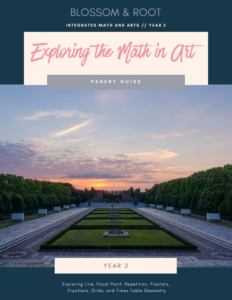
Blossom & Root’s Exploring the Math in Art
This is more art program than maths program! But Miss Newly Eight loves art. We used this program once per week because I believe in the power of exploring a child’s least favourite subject (though she is very good at it) through the lens of their most favourite subject. I guess it’s like serving your child’s least favourite vegetable covered in cheese or good gravy!
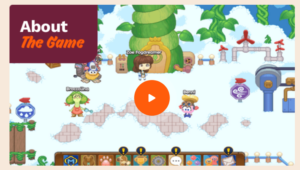
PProdigy Math
This is an online game that is free to play. There are bonus features if you pay to become a member. If you are on Facebook there are groups that organise heavily discounted buy-ins and this is the only reason we are members (it’s usually about $15 for the whole year). Both of my children have loved this game (at different times in life) which basically drills your child on math facts and procedures and adjusts the challenges as your child’s skill grows. Prodigy Math introduced my daughter to concepts that weren’t covered in Bag It or Box It and really challenged her just at the limits of her skills. Again, we only used this once per week.
What we will be using:
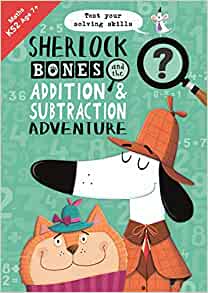
Sherlock Bones
I bought the first book in this series on a whim. It’s just a bit of math drill fun that will replace the Kate Snow games if they’re feeling a bit stale or the day is getting away from me!
Enjoy Maths!
So, we’ve only just dipped our toes in Enjoy Maths! But I’m getting those sort of warm, fuzzy, memory-making vibes from it that I got from Bag It or Box It. And I wholeheartedly appreciate that Wendy makes these packs with home educators in mind. Bag It or Box It required a bit of forethought and creativity on my part as it is intended for classrooms. This program will take some of that load off of my shoulders which is much appreciated now I’m working with two serious students! This program will form the bulk of Miss Newly Eight’s maths intruction.
(We interviewed Wendy on the HomeEdVocies podcast in October 2019. You can find her episode here.)
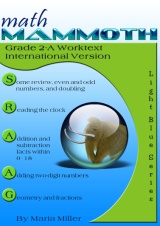
Math Mammoth
I’ve had this program kicking around since Mister 11 was Mister Seven. He hated it. With a passion. I didn’t understand it then, but this program is just not made for the way his weird and wonderful brain works.
Miss Newly Eight though, she hates Beast Academy. With a passion. She just wants to get maths done, be right and feel masterful. She doesn’t want a puzzle, just straight forward instructions thank you very much. We will use this workbook in the car twice per week when Enjoy Maths! won’t be possible. And I do feel each section in the workbook is much too full of drills, so she will be allowed to complete the workbook at her own pace. So far she has always chosen to complete more in one sitting than I would have asked her to.
Though this is an American product, Math Mammoth offers an international download so you can replace sections on money and measuring with British/European/Australian alternatives.
KS3 maths with Mister 11
What we’ve used and will continue to use:
Kate Snow’s Math Facts That Stick
Maths is finally making some sense for Mister 11 and I feel ready to foray into the multiplication and division facts books with him. I do love that Kate Snow offers a different game for every week which is perfect for his ADHD, but I also find that the way she manipulates numbers in the brief lesson provided before each practice game makes a lot of sense to him. This is another resource that works how his brain works.
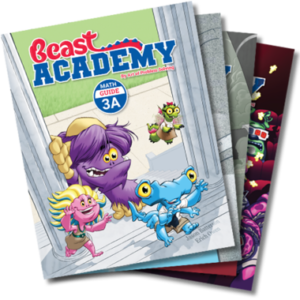
Beast Academy
These are not cheap and the shipping hurts. There are UK re-sell groups on FB but I find there are more that want than those that have to give. And there is so much going on in these books that we’ve struggled to complete a series in a school year. But I’ve just found BA’s very helpful planning resources which point out which lessons are essential and which are enrichment so fingers crossed for a slightly less full-on maths this year! Mister 11 will no doubt want to do the enrichment pages, so my plan is to go back to these to review. He will use this program 4-5 days each week.
It took me years to find a program that held Mister 11’s interest enough that he would persist in spite of his hate-fear of maths. Serendipitously, we tried out a maths group led by a tutor where he developed a love of Algebra – an obsession really. It was a lightbulb moment for both of us. He didn’t hate-fear all maths and he wasn’t all that bad at it either. He hate-feared drills which seemed to freeze his brain. BA is still full of drills, they’re just disguised as puzzles! His faltering confidence in his maths ability has soared. I’m afraid this is just one of those investments I have to work my other HE investments around.
Plus a few bonuses:
Enjoy Maths! Messing About with Algebra
I was so excited to see this among Wendy’s stand-alone units! I haven’t bought it yet because I had to buy a Beast Academy set to kick off our new cycle. But when the HE pot recovers a bit, I will be over the moon to treat him to a little BA break with his first maths love.
What’s the Point of Maths? and A Quick History of Maths
This harkens back to what I said before about cauliflower-cheese…er, I mean, exploring a child’s least favourite subject through the lens of their most favourite subject. Mister 11 is a history buff. We’ve started What’s the Point of Maths which starts with a brief timeline of maths’ evolution. Who knew the digit zero had such a fascinating history? Or was so controversial at one time that it was banned in Florence, Italy? We just can’t read it fast enough for him. A Quick History of Maths I am keeping up my sleeve for when it looks like the cauliflower could do with some more cheese.
